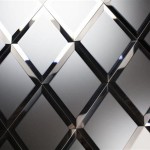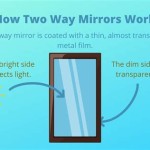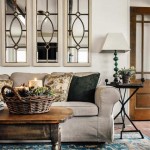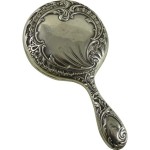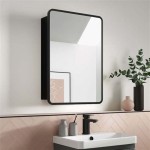How to Frame a Mirror Without Wood
Framing a mirror without using traditional wood offers a range of creative and practical possibilities. Alternative materials can provide unique aesthetics, enhanced durability in humid environments, and often, a lighter weight final product. This article explores several methods for framing a mirror without wood, outlining the materials required and step-by-step instructions.
Using Metal Frames
Metal provides a sleek and modern framing option. Aluminum, stainless steel, and brass are popular choices, offering durability and resistance to moisture. Pre-made metal frames can be purchased in various sizes and finishes, simplifying the framing process. Alternatively, metal strips or bars can be cut and joined to create a custom frame.
To frame a mirror with metal, accurate measurements are crucial. Measure the mirror's dimensions precisely and purchase or cut the metal accordingly. For pre-made frames, follow the manufacturer's instructions for installation, which typically involve clips or adhesive. When creating a custom frame, metal strips can be joined using metal epoxy or soldering. Ensure the frame is securely fastened before mounting the mirror using mirror adhesive or clips.
Consider the weight of the mirror when selecting a metal frame. Heavier mirrors will require a more robust frame to provide adequate support. Additionally, the chosen metal should complement the mirror's style and the surrounding décor.
Employing Mosaic Tiles
Mosaic tiles offer a decorative and customizable framing option. Glass, ceramic, or stone tiles can be used to create intricate patterns and designs. This method is particularly suited for smaller mirrors, as the tiling process can be time-consuming for larger surfaces.
Before starting, select the desired tiles and plan the mosaic design. A substrate, such as a sturdy piece of cardboard or foam board, cut to the desired frame dimensions, will serve as the base. Apply tile adhesive to the substrate and carefully arrange the tiles. Allow the adhesive to dry completely according to the manufacturer's instructions.
Once the adhesive is dry, grout the spaces between the tiles using a suitable grout and a grout float. After the grout has cured, clean the tiled frame and attach it to the mirror using a strong adhesive. Ensure the adhesive is compatible with both the tiles and the mirror's backing.
Framing with Rope or Cord
For a nautical or rustic aesthetic, rope or cord can be utilized to create a unique frame. This method is best suited for lighter mirrors and can be easily adapted to different shapes and sizes.
Begin by selecting a durable rope or cord. Natural fibers like jute or sisal provide a rustic look, while synthetic materials offer greater durability and weather resistance. Measure the perimeter of the mirror and add extra length for wrapping and knotting. A strong adhesive, such as hot glue or construction adhesive, is required to secure the rope to the mirror's edge.
Starting at one corner, carefully apply adhesive to the mirror's edge and begin wrapping the rope tightly and evenly. Overlap the rope slightly to create a seamless look. Continue wrapping until the entire perimeter is covered, securing the end with a knot or by tucking it under the wrapped rope. For added stability, consider applying a layer of sealant over the rope to protect it from fraying and moisture.
Utilizing Repurposed Materials
Repurposed materials offer a sustainable and cost-effective way to frame a mirror. Old picture frames, broken tiles, or even seashells can be creatively incorporated into a unique frame design. This method allows for a high degree of personalization and can result in truly one-of-a-kind pieces.
The process of framing with repurposed materials depends on the specific items chosen. For example, an old picture frame can be adapted by removing the glass and backing and painting or decorating it to complement the mirror. Broken tiles can be used in a similar manner to mosaic tiles, creating a fragmented, artistic frame. Seashells can be glued directly to the mirror's edge, creating a natural and textured frame.
When using repurposed materials, ensure they are clean and free of any debris. Choose an adhesive that is appropriate for the materials being used and the mirror's backing. Consider the overall weight and stability of the frame when selecting materials and ensure the final product is secure and suitable for hanging.
Diy Modern Mirror Re Frame What Not To Do Kayla Simone Home

How To Frame A Bathroom Mirror For Just 10

How To Easily Make A Custom Mirror Frame

How To Frame A Mirror

How To Build A Diy Frame Hang Over Bathroom Mirror Love Our Real Life

How To Frame A Bathroom Mirror For Just 10

Diy Oval Mirror Frame Domestically Speaking

How To Build A Diy Frame Hang Over Bathroom Mirror Love Our Real Life

Diy How To Frame A Builder Grade Bathroom Mirror Home And Hallow

Diy How To Frame Mirrors W No Nails S Glue 10 Wood Mirror Bathroom Framed

